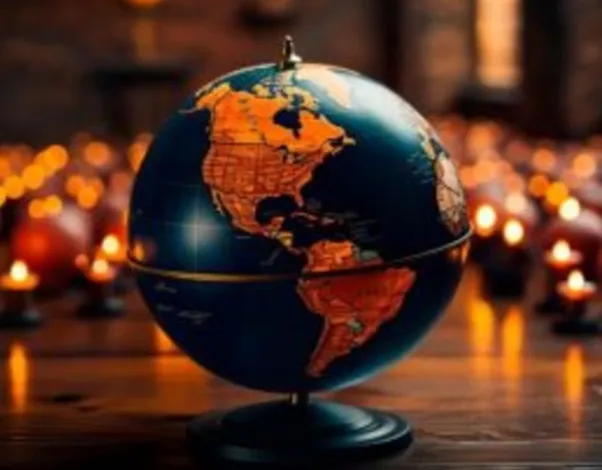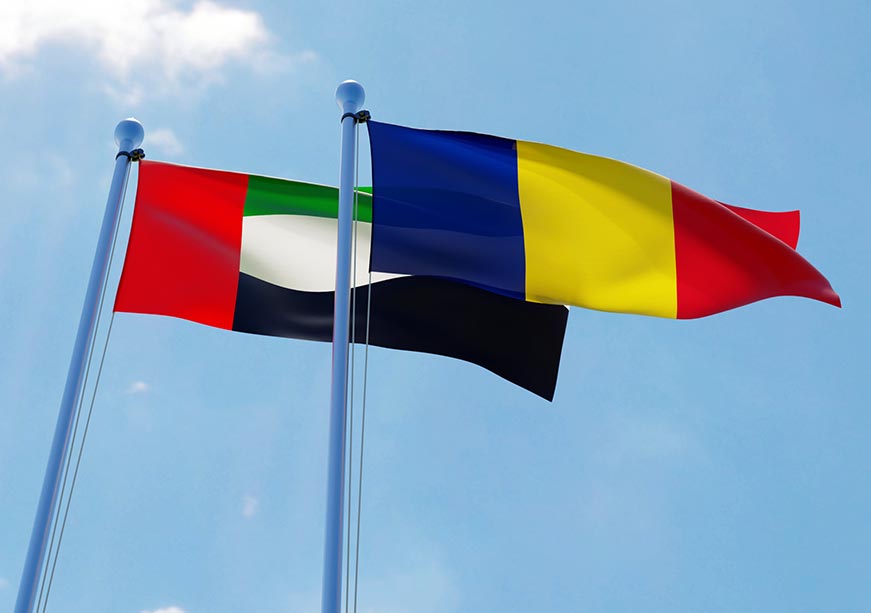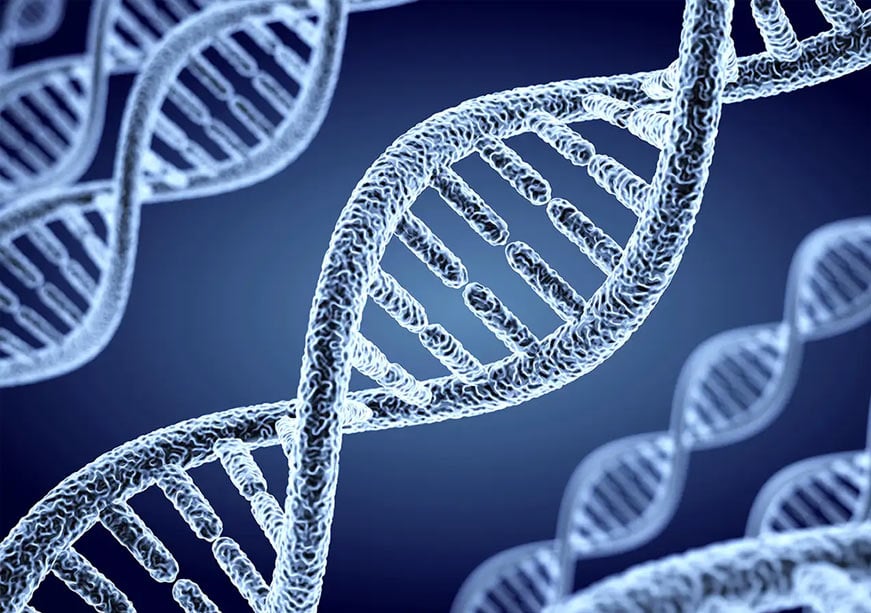This article is a chapter in the journal — Raisina Files 2023.
From non-relations to clandestine engagements, to normalisation in ties—partnerships between India, Israel, and the United Arab Emirates (UAE) have transformed over the recent decades. The India-Israel-UAE trilateral in its current form offers a definitive example of a blend between Realism and Constructivism approaches in International Relations. By channelling Realpolitik, the three nations are allowed to give primacy to their national interest. At the same time, geopolitical and mainly geoeconomic realities, along with emerging non-conventional global crises, have led the three countries to cooperate on areas of mutual concern, for instance in building an India-Middle East food and energy corridor.<1> Given the geopolitical complexities vis-à-vis Israel’s independence in May 1948, India formally recognised the Jewish nation on 17 September 1950. However, owing to its concerns on Palestine, New Delhi took more than four decades to normalise its relations with Tel Aviv and soon, defence and agriculture became the bedrock of their bilateral ties. Strategic partnerships in multifaceted domains started only in June 2017, when by visiting Israel and Palestine separately, Prime Minister Narendra Modi signalled New Delhi’s decoupled approach.<2> The 1992 normalisation was primarily driven by shifts in the global geopolitical atmosphere with the disintegration of the Soviet Union. Under the Modi administration, geoeconomic drivers along with parallels in ideologies have led to a closer embrace with the Jewish nation.<3> Today, total trade between India and Israel stands at US$7.86 billion.<4> On the defence front, Israel accounts for about 8.48 percent of India’s total arms imports and is its fourth largest supplier after Russia (46 percent), France (27 percent), and the United States (12 percent). In terms of agricultural support, Israel has not only shared its agri-tech and water conservation technologies with India but has also established around 30 agricultural ‘centres of excellence’ across the country.<5> Akin to diplomatic attachés, Israel has deployed its agriculture and water attachés to India as a special appointment to assist in the country’s agricultural development.<6> Indo-Emirati relations, meanwhile, were for long anchored on the 3Es of energy, economy, and expatriates—and largely transactional. It was only in January 2017 that the two signed a comprehensive strategic partnership agreement, and relations started to flourish in multiple domains. Today, the UAE is not only India’s third largest energy supplier (US$20,320.22 million)<7> but is also its third largest trading partner with total bilateral trade standing at US$73 billion in 2021-22.<8> The UAE, on the other hand, was once Israel’s nominal adversary but informal relations between the two have existed since 2010. In November 2015, Israel opened its first diplomatic mission in Abu Dhabi.<9> Thus, at the bilateral level, India’s engagements with Israel and the UAE, and those between Israel and the UAE have been at an upward trajectory. The normalisation of UAE-Israeli relations under the banner of the Abraham Accords<10> brokered by the US during the pandemic, in August 2020, has paved the way for enhancing the trilateral relationship. It has also enabled the three partners to channel their unique strengths for future partnerships, among which is the establishment of a transregional order along the India-Middle East-Europe corridor. This transregional order is based on economic complementarities, potential vibrant ecosystem, and technological capabilities. In its true sense, the ‘normalisation’ of relations has pushed the countries towards three Cs: complementarities, collaboration, and cooperation. These developments have led some scholars to refer to the trilateral as an ‘Indo-Abrahamic Accord’—<11> reflecting New Delhi’s newfound, trustworthy geopolitical space as it expands its clout in West Asia. Moreover, India’s stature as a South Asian giant is no longer a secret to the world. India’s economic stability and growth, which has increased the country’s purchasing power parity, makes it a lucrative market for foreign direct investments by partnering countries.<12><13>
The India-UAE-Israel Trilateral Cooperation
Eight months after the normalisation of relations between Israel and the UAE, India signed a trilateral partnership with the two regional players in May 2021. At present, the estimated US$110-billion deal by 2030 is focused on producing innovative robotic solar cleaning technology in India for a landmark project in UAE.<14> While the project has a single agenda, it is pegged with innovation and business potential, and therefore will play a crucial role in the two countries’ overall cooperation. Likewise, at the quadrilateral level, India-Israel-UAE, and the United States in October 2021 formed a minilateral aimed at economic cooperation. (This would later be named ‘I2U2’ in July 2022.) Meetings have been held at various levels—sherpa, foreign ministerial, and heads of state. While a number of conventional and non-conventional areas of mutual interest have been charted out—ranging from water, energy, transportation, space, health, and food security—emphasis is being given to catering to global as well as regional energy and food security challenges.<15> The minilateral aims to be inclusive and is seeking to involve both public and private sectors in initiatives in infrastructure, connectivity, low-carbon development, and public health. Thus, India’s engagement with its West Asian partners at both trilateral and quadrilateral levels aims to create a synergy of areas for cooperation.
Is India Planning for an Inter-Regional Connectivity Corridor?
Since September 2020, the US-brokered peace accord signed between the UAE and Israel has facilitated India’s trilateral level interaction with both its important West Asian partners.<16> Prior to this, India had managed to maintain a flourishing relationship with both Israel and the UAE individually, by effective application of its strategic autonomy in the region. Likewise, India and UAE signed a Comprehensive Economic Partnership Agreement (CEPA) in February 2022, coming into force in May 2022, which ensures free, open, and non-discriminatory trade between the two countries.<18> The comprehensive agreement guarantees greater access for UAE exports to the Indian market by reducing or removing tariffs on more than 80 percent of the products traded. A similar agreement is being negotiated by India and Israel to ease their bilateral trade.<19> India’s growing diplomatic bonhomie with Egypt and its increasing interest in the region indicates that the country is looking forward to signing a comprehensive inter-regional free trade agreement with several partners. Thus, a vibrant trilateral relation between India, UAE (in Persian Gulf) and Israel (in the Mediterranean region); comprehensive free trade agreements between the partners; and inclusion of other inter-regional players—all indicate that India is serious in its plan for a connectivity from Mediterranean to India via the Red Sea and the Gulf.<20> In November 2021, India’s External Affairs Minister S. Jaishankar met his UAE, Saudi, Egyptian, Greek, Israeli and Cypriot counterparts on the sidelines of the 12th Sir Bani Yas Forum held in Abu Dhabi.<21> The proposed corridor is likely to connect India, the Gulf, parts of Africa and Eastern Mediterranean, with regions in Europe. Still in its preliminary stage, such a connectivity corridor is akin to the International North-South Transport Corridor<22> and the Chabahar port<23> development initiatives by India which links Europe, Russia, Central Asia, Iran, and Afghanistan to India. While Russia and Iran are India’s partners in the latter two projects, America’s involvement along with UAE and Israel in the development of the connectivity corridor is the best example of India’s strategic autonomy at multilateral levels. Interestingly, by building these corridors, India along with its inter-regional partners is not only aiming to secure safe transit of freight but is also safeguarding its interests in the western flank of the Indo-Pacific. In a way, this is India’s own version of the Belt and Road Initiative.
Food and Fuel Corridor
Existing global food crises in many parts of the globe, heightened by the outbreak of COVID-19 and the ongoing European war, have created an escalating demand for food especially in West Asia. The region is dependent on Russia and Ukraine for much of its food requirements. As per a May 2022 Food and Agricultural Organisation (FAO) report, of the 50 countries dependent on both Russia and Ukraine for food, nearly 10 are in the West Asia and North Africa (WANA) region, whose combined dependence level on the two countries is above 30 percent.<24> At both trilateral and quadrilateral levels, India-UAE-Israel have been working on creating food corridors to address food insecurity issues in both South Asia and WANA. An India-Middle East Food Corridor—a new West Asia value supply chain—aims to harness the three countries’ commercial, investment, market, and technological synergies to form a tripartite alliance and become a food exporting powerhouse.<25> The probable food supply chain forged from innovative, agri-tech and climate-smart technologies is likely to effectively reconfigure commercial relations along the India-Middle East-Europe proposed connectivity corridor. At the same time, the route will also be used as an energy corridor for the inter-regional partners. The prolonged Russia-Ukraine war has created a supply-demand gap in food and energy and thus the two are the most critical components in the regions that will be served by the connectivity corridor. To be sure, the geopolitical and geoeconomic significance of all the three corridors—connectivity, energy, and food—is not new; the vitality of these projects rests on the fact that both UAE and Israel, individually, have been playing a critical role in advancing India’s food production and distribution. The strategic power and sustainability of the India-Middle East Food and Energy Corridor derives from the fact that it is organically developed and strengthened, first, at bilateral levels. By involving private sector, joint venture investment and bilateral public-private engagements, the partnering countries are seeking to ensure the viability of the corridor. For instance, Israel has been bilaterally involved in India’s agricultural sector since 2014 when it started creating Centres of Excellence (CoEs) across the country. Today there are 30 Israeli-developed CoEs in India that involve private companies and concentrate on farmers’ training, and effective use of agri-tech and smart-tech to increase crop yield. Likewise, since 2019, the establishment of food parks in India was already an integral part of UAE’s logistical plan ideated ahead of the I2U2 format.<26> Engagement beyond bilateral levels enables the partner countries to focus on employing a more sustainable food-water-energy nexus approach along the corridor. Thus, the US’s involvement in the I2U2 is critical as it ensures political commitment and would make the engagement more binding. While the US is not a benefactor of the corridors, its involvement in the inter-regional partnership provides it an edge by marking its presence in the strategic architecture of the Indo-Pacific. This is crucial for checking China’s growing commercial and strategic footprint in the Western Indo-Pacific, more specifically in West Asia, where the US is seemingly losing its foothold. There is a synergy in both the initiatives, therefore. Under the I2U2 project, UAE has pledged to invest US$2 billion in the construction of a series of integrated food corridors and parks across India. To incorporate food-water-energy nexus, the food parks are created in such a manner that they will simultaneously work towards increasing food production and reducing food wastage, conserve water, and employ renewable energy sources. At the same time, the corridor seeks to address food and energy security aspects in a more holistic manner by aiming to achieve three main goals—namely, increasing crop yields in India; enhancing farmer’s incomes by supplying them with high-quality seeds, equipping them with agri-tech facilities and marketing crop produce at better rates; and maintaining export-quality standards to cater to the South Asian and West Asian markets.<27> It will, therefore, address access, availability, utilisation and thereby affordability and stability aspects of food security.<28> While the use of the corridor ensures accessibility of food and fuel and increased production of crops by using climate-smart technology, and agri-tech addresses the availability aspect; excess and sustained supply helps in maintaining commodity price thus addressing affordability, utilisation, and stability components of food security. The second project emphasised in I2U2 and in the trilateral engagement is aimed at advancing a hybrid energy plant in Dwarka, Gujarat with a wind and solar energy capacity of 300MW. The US Trade and Development Agency (USTDA) and UAE’s International Renewable Energy Agency (IRENA) have pledged to invest in the proposal as knowledge and investment partners. USTDA has invested US$300 million in a feasibility study for the project. The involvement of private sector firms will enable the project to achieve India’s goal of reaching 500GW non-fossil fuel capacity by 2030. Thus, the success of the project will define India’s potential in becoming a global supply chain hub in renewable energy.<29> By leveraging the strengths of each partner—i.e., the US’s political commitment, Israel’s top-notch climate-friendly technologies, UAE’s investment capabilities, and India’s human capital, vast cultivable land and limited diplomatic hurdles to ease business prospects—the joint initiative could be a viable solution to meeting inter-regional food and energy requirements along the India-Middle East-Europe corridor. To conclude, the normalisation of Israel-UAE relations has enabled India to engage with its two vibrant West Asian partners at the bilateral, trilateral, quadrilateral and multilateral levels. Such multi-level engagements have helped the countries channel their 3Cs—complementarities, cooperation, and collaboration—in various aspects. Such results-oriented mindset is key in developing an inter-regional connectivity corridor along the Europe-Mediterranean-Gulf-India route. By employing a food-water-energy nexus approach, the three countries are aiming to strengthen their economic and political prospects along the Western Indo-Pacific. At a time when Indo-Pacific features heavily in India’s strategic calculus, more robust partnerships with the UAE and Israel will be crucial in meeting its strategic objectives in the region. After all, food, energy, and water are critical non-conventional strategic components of the future. By catering efficiently to the global supply chain, India and its inter-regional partners are marking their place at the global high table.
Endnotes
<1> Michael Tanchum, “The India-Middle East Food Corridor: How the UAE, Israel and India Are Forging a New Inter-regional Supply Chain,” The Middle East Institute, July 27, 2022. <2> Sanjeev Miglani and Tova Cohen, “India’s Modi Heads to Israel, Lifting the Curtain on Close Ties,” Reuters, June 30, 2017. <3> Manjari Singh and Chirayu Thakkar, “The Real Story Behind India and Israel’s Surprising Alliance,” Haaretz, February 8, 2022. <4> Naina Bhardwaj, “India-Israel Bilateral Trade and Investment Trends,” India Briefing, August 25, 2022. <5> Manjari Singh and Chirayu Thakkar, “India and Israel Mean Business, In Many New Sectors,” The Economic Times, February 13, 2022. <6> Manjari Singh, “Can I2U2 Address India’s Food Security Challenges?,” The Times of India, September 28, 2022. <7> Director General of Foreign Trade (DGFT), “Import: Commodity and Countrywise,” Export Import Databank, 2022. <8> Embassy of India in Abu Dhabi, “Bilateral Economic and Commercial Relations,” Government of India. <9> Barak Ravid, “Exclusive: Israel to Open First Diplomatic Mission in Abu Dhabi,” Haaretz, November 27, 2015. <10> Under the Trump administration, a peace accord was signed between Israel and a few Arab countries, such as the UAE, Bahrain and eventually Morocco (effective since September 2020). The peace deal was named the Abraham Accords to give theological importance to the accord based on common lineage. Abraham or Ibrahim (in Islam) is the father of Isaac (a Jew) and Ishma’il (an Arab Muslim), thus suggesting that Abraham is the father figure to both Muslims and Jews, and therefore, Jews and Muslims are brothers. As family and blood relations are part of a close-knit social fabric, designating such a name to the accord would symbolise its success. <11> Mohammed Soliman, “An Indo-Abrahamic Alliance On the Rise: How India, Israel, and the UAE are Creating a New Transregional Order,” Middle East Institute, July 28, 2021. <12> With 7 percent growth, India’s economy stands at US$3.53 trillion at current prices, which makes the country the fifth largest economy in the world. In terms of purchasing power parity, India stands third. For more details, refer Martin Armstrong, “India Overtakes UK to Become Fifth Biggest Economy,” World Economic Forum, September 26, 2022. <13> Ravi Bhoothlingam, “The ‘Asian Age’ and Role of China and India,” Global Times, July 14, 2019. <14> Rezaul H. Laskar, “UAE Trade Deals With India, Israel Hold Potential for Extensive Trilateral Cooperation: Naor Gilon,” The Hindustan Times, May 31, 2022. <15> Ministry of External Affairs (MEA). <16> “Abraham Accords Peace Agreement: Treaty of Peace, Diplomatic Relations and Full Normalization between the United Arab Emirates and the State of Israel,” US State Department, September 15, 2020. <17> Alexander Cornwell, “Israel, UAE Boost Ties With Free Trade Pact,” Reuters, May 31, 2022. <18> “UAE-India Comprehensive Economic Partnership Agreement,” United Arab Emirates Ministry of Economy. <19> Ministry of Commerce and Industry, “India-Israel Free Trade Agreement (FTA) Negotiations,” Government of India. <20> Sidhant Sibal, “Plans Afoot for Connectivity from Mediterranean to India Via Gulf,” WION, October 5, 2021. <21> Sidhant Sibal, “Plans Afoot for Connectivity from Mediterranean to India Via Gulf” <22> “Explained: INSTC, the Transport Route That Has Russia and India’s Backing,” Business Standard, July 14, 2022. <23> Manjari Singh, “The Chabahar Port Imperative,” in Iran Under Ebrahim Raisi: The View from India, Special Report No. 154, ed. Kabir Taneja, Observer Research Foundation, August 2021, pp. 5–9. <24> Lebanon, Egypt, Libya, Oman, Saudi Arabia, Yemen, Tunisia, Iran, Jordan, and Morocco import exorbitantly from Russia and Ukraine. For details, see Food and Agriculture Organization (FAO), Impact of the Ukraine-Russia Conflict on Global Food Security Related Matters Under the Mandate of the Food and Agriculture Organization of the United Nations (FAO), May 2022, https://www.fao.org/3/nj164en/nj164en.pdf. <25> Tanchum, “The India-Middle East Food Corridor: How the UAE, Israel and India Are Forging a New Inter-Regional Supply Chain.” <26> I2U2 is an acronym for the India-Israel-UAE-US quadrilateral and inter-regional engagement which aims to address six areas of critical and mutual interests. Food and energy are the two most focused areas of cooperation in the current format. <27> Manjari Singh, “Can I2U2 Address India’s Food Security Challenges?” <28> Food and Agriculture Organization (FAO), Food Security, June 2006, https://www.fao.org/fileadmin/templates/faoitaly/documents/pdf/pdf_Food_Security_Cocept_Note.pdf. <29> Manjari Singh, “I2U2: Shaping Stable and Prosperous Middle East,” India and the World 5, no. 3: 66–71.












